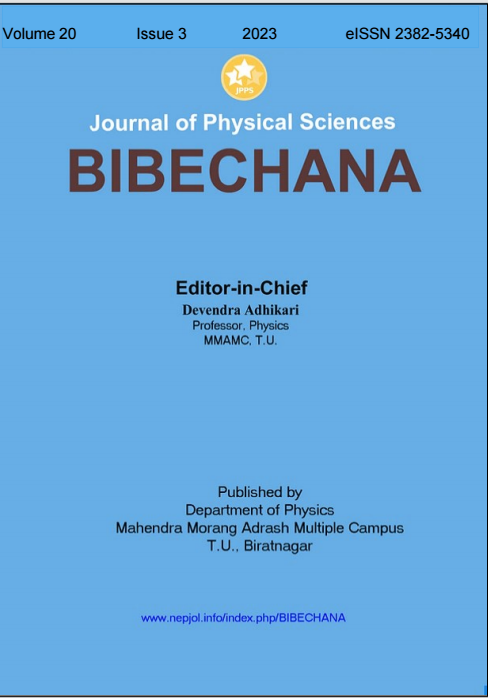Characterization of carbon derived from candle by flame-soot method for counter electrodes of dye-sensitized solar cells
DOI:
https://doi.org/10.3126/bibechana.v20i3.58041Keywords:
Candle soot, Flame-soot method, Counter electrode, Catalyst, Dye-sensitize solar cells, Charge transfer resistanceAbstract
Candle soot, carbon samples prepared by flame-soot method, was characterized and investigated for its catalytic ability for the reduction of tri-iodide ions aiming to substitute expensive platinum based electrode used in dye-sensitized solar cells (DSCs). The Energy Dispersive X-ray Spectroscopy of the candle soot samples revealed that the soot contains 96% carbon. Similarly, Scanning Electron Microscopy images show that the candle soot consists of interconnected carbon nanoparticles of size ∼50 nm. Furthermore, X-ray Diffraction and Raman spectroscopy showed that the candle soot consists of disordered and ordered graphitic carbons in a comparable proportion. The catalytic ability of the candle soot was compared with that of platinum by Electrochemical Impedance Spectroscopy of the symmetrical electrochemical cells. The charge transfer resistance (Rct) at the candle soot-electrolyte interface was observed to be ∼4.42 Ω cm2 compared to ∼ 5.04 Ω cm2 that of the platinum-electrolyte interface. The candle soot was prepared by a simple method using low-cost material; hence, it can be a low-cost and efficient counter electrode material alternate to the platinum used in counter electrodes of DSCs.
Downloads
Downloads
Published
Versions
- 2023-12-01 (2)
- 2023-11-30 (1)
How to Cite
Issue
Section
License
Copyright (c) 2023 Prakash Joshi, Umesh Lawaju, Anupama K.C., Min Nakarmi, Ramani Pradhan

This work is licensed under a Creative Commons Attribution-NonCommercial 4.0 International License.
This license enables reusers to distribute, remix, adapt, and build upon the material in any medium or format for noncommercial purposes only, and only so long as attribution is given to the creator.




